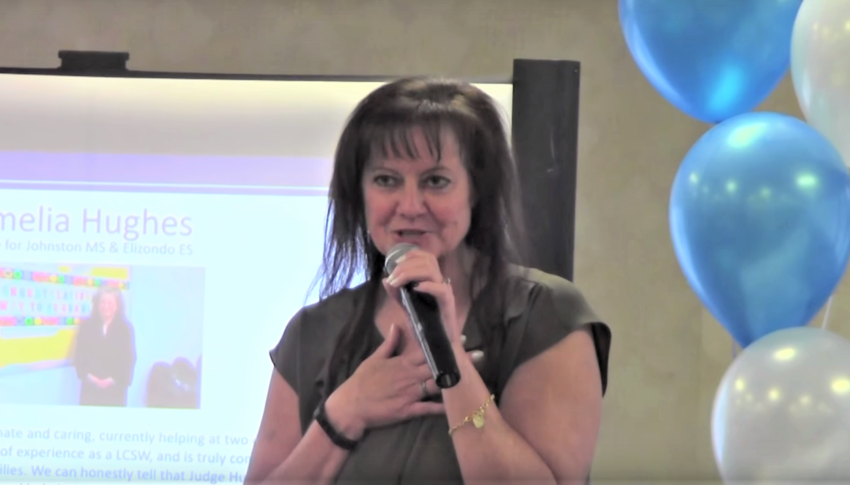
Share On Social!
On the night of Oct. 1, 2017, a shooter opened fire at a music festival in Las Vegas, Nevada. He killed 59 people, injured 500 more, and traumatized thousands of kids and families.
For Tammy Malich, it was another wake-up call on the path to a positive school climate.
Malich, assistant superintendent at Clark County School District in Nevada, already ushered the district toward restorative justice—addressing the mental and emotional roots of student behaviors instead of immediately punishing students—to improve classroom success.
But the shooting highlighted the kind of trauma students may experience at home or in the community, which can burden learning and attendance in school.
Malich wanted Clark County schools to be better prepared to help traumatized students.
She first learned about Handle With Care, a program in which police officers alert schools when they encounter a child at a traumatic scene, so schools can provide support, while at a conference.
Would it fit into the emerging positive school climate in the district─even the state?
The Complicated Lives of Nevada Students
Malich was born and raised in Las Vegas. She has worked with at-risk students most of her career.
She is concerned because she sees more mental, emotional, and behavioral health needs in children, but their families often lack support and/or resources, especially Latino students and students of color.
“In Las Vegas, we have a lot of transplants,” Malich said. “It is often just the family unit and they don’t have a support network.”
Nevada ranks 51st in the nation for prevalence of mental illness and access to mental health care.
Of youth diagnosed with a mental illness here, 64% don’t get treatment. Nearly 17% said they seriously considered a suicide attempt in the past 12 months, and 14% said they made a suicide attempt plan.
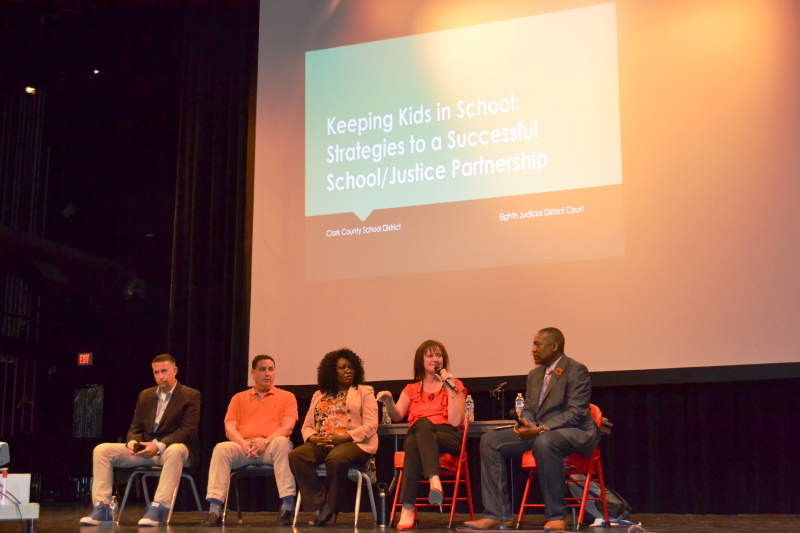
Sadly, youth with emotional or mental health problems are often misidentified with behavioral issues rather than an emotional or mental health issue. For example, fewer students in Nevada have been identified as having an emotional disturbance (5%) than in Massachusetts (15%).
Misidentified students face harsher discipline in schools. They also can’t gain support in Individualized Education Programs (IEPs), which can boost behavior and academic outcomes.
“Mental illness under the guise of a “behavioral issue”, along with lower expectations of certain populations, and lack of education in parents concerning the effects of trauma, prevent many high-risk students from receiving IEPs,” according to the State of Mental Health in America 2018 report.
This isn’t all Clark County students deal with, either.
- Nevada schools reported 13,000 bullying incidents in the 2017-2018 schoolyear.
- Violence to students, violence to staff, possession/use of drugs, and possession of a weapon has risen over the past four years on Clark County campuses.
- Authorities found more than 52 guns on campuses in 2017-2018.
- Nevada ranks 46th among U.S. states in violent crime, including murder, rape, robbery, and aggravated assault.
- Of high school students, 17.7% report having been hit, beaten, kicked, or physically hurt in any way by an adult, according to the Nevada YRBS.
- In 2016, 13 children died as a result of maltreatment. That same year, 4,891 children were victims of maltreatment.
Malich would read about horrific events─often called Adverse Childhood Experiences (ACEs)─that happen to kids at home or in the community.
“I had an employee on my team whose life was violently taken by her husband in front of their two children, and those children were back in school the following day,” Malich said.
Malich felt schools could be better prepared to help these traumatized kids.
Nevada’s First Steps toward a Positive School Climate
Creating a positive school climate is good for learning and reduces crime.
Malich and the Clark County School District (CCSD) had been actively changing its disciplinary culture toward a positive school climate for the last several years.
They shifted away from a zero-tolerance punitive discipline model. This model does nothing for the victim. A school suspension is rarely felt as a punishment for the perpetrator, who often doesn’t have a positive connected feeling at school, Malich said.
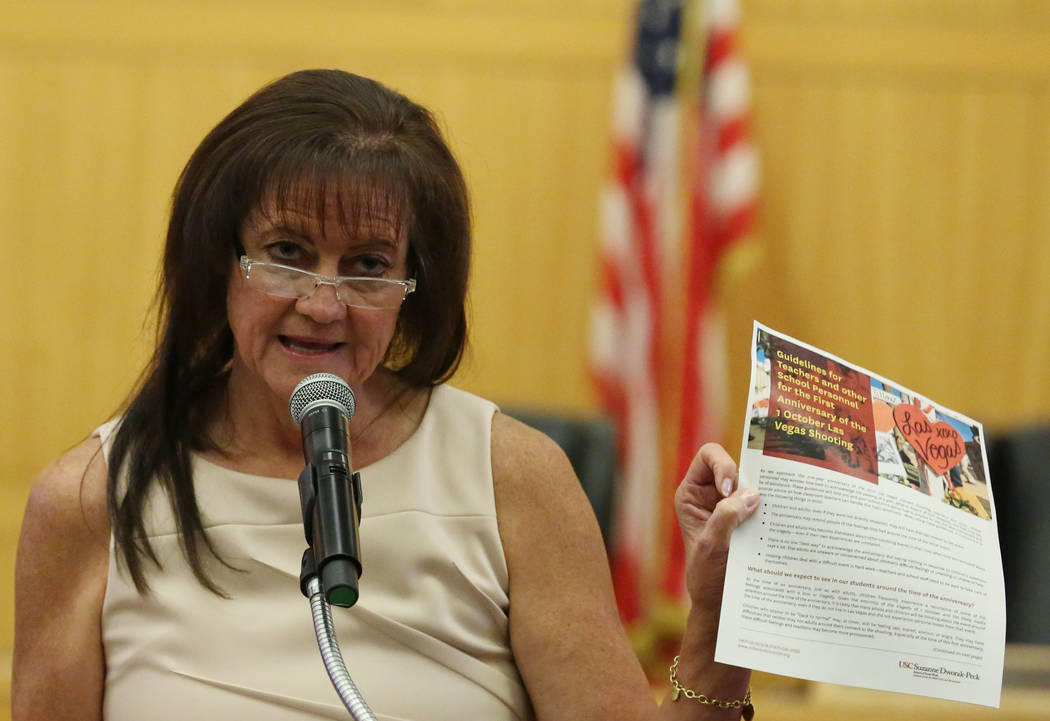
“We’ve done zero tolerance and our schools aren’t safer,” Malich said. “We aren’t changing behavior. We are just bouncing kids around and widening the achievement gap.”
Instead, the district moved to a more restorative justice model, particularly to address disparities in disciplinary action among minority students.
The goal is to stop criminalizing student behavior and make all students feel connected and safe.
“It’s easy to sign a suspension form, but suspensions increase absenteeism and decrease academics,” Malich said. “It’s work and takes a lot of care and concern to walk down the restorative path.”
A tragic event helped Malich realize how much more schools needed to do to really support Nevada students who face tremendous trauma outside school walls.
‘Her Daughter Did Not Make It’
The Las Vegas music festival shooting prompted a school response.
Because the Clark County School District had the largest base of counselors and mental health professionals as employees, they were called on to provide support to victims and families after the shooting.
Nearly 200 school counselors, psychologists, nurses, counselors and social workers responded the morning after the horrific tragedy.
“I witnessed a young mother … she had just been told by a couple of detectives that her daughter did not make it, and just to see that reaction was heartbreaking,” said Teresa Chavez, a Clark County School District psychologist, according to Amelia Pak-Harvey with the Las Vegas Review-Journal.
Malich sought ways to better prepare school personnel for future tragedy.
Having learned at a 2018 conference about West Virginia’s “Handle With Care” program as a way to connect police with schools to help students, Malich wanted to try it in Nevada.
‘Handle With Care’ to Address Student Trauma
Handle With Care is a West Virginia Center for Children’s Justice’s program to promote collaboration with police, schools, and mental health leaders to help children who’ve experienced trauma.
It enables local police to notify school districts when they encounter a child at a traumatic scene, so the school staff and mental healthcare providers are prepared to provide immediate support for students.
The program has three main components:
- Law enforcement notification — When law enforcement identifies a child at the scene of a traumatic event (domestic violence, meth lab explosion, drug raid, shooting, etc.), they will send a confidential notification (by email, text, phone, or fax) to the student’s school district or childcare agency with four pieces of information: the child’s name, age, school name, and a message to “Handle With Care.” Law enforcement does not share any details of the incident.
- Trauma-informed school training — The school district or childcare agency will create a process to triage “Handle With Care” notifications from police to relevant teachers and staff. These individuals are trained to observe the student’s behavior and respond to their needs using trauma-sensitive interventions.
- School-located therapy — When school interventions are not sufficient, mental health professionals trained in Trauma-Focused Cognitive Behavior therapy can provide on-site treatment at schools during a time that is least disruptive to the student’s academic schedule (with consent from the parent or guardian).
Salud America! worked with the WV Center for Children’s Justice to create a 5-step action pack to help more communities launch Handle With Care.
Malich thought Handle With Care would work in her district, and beyond.
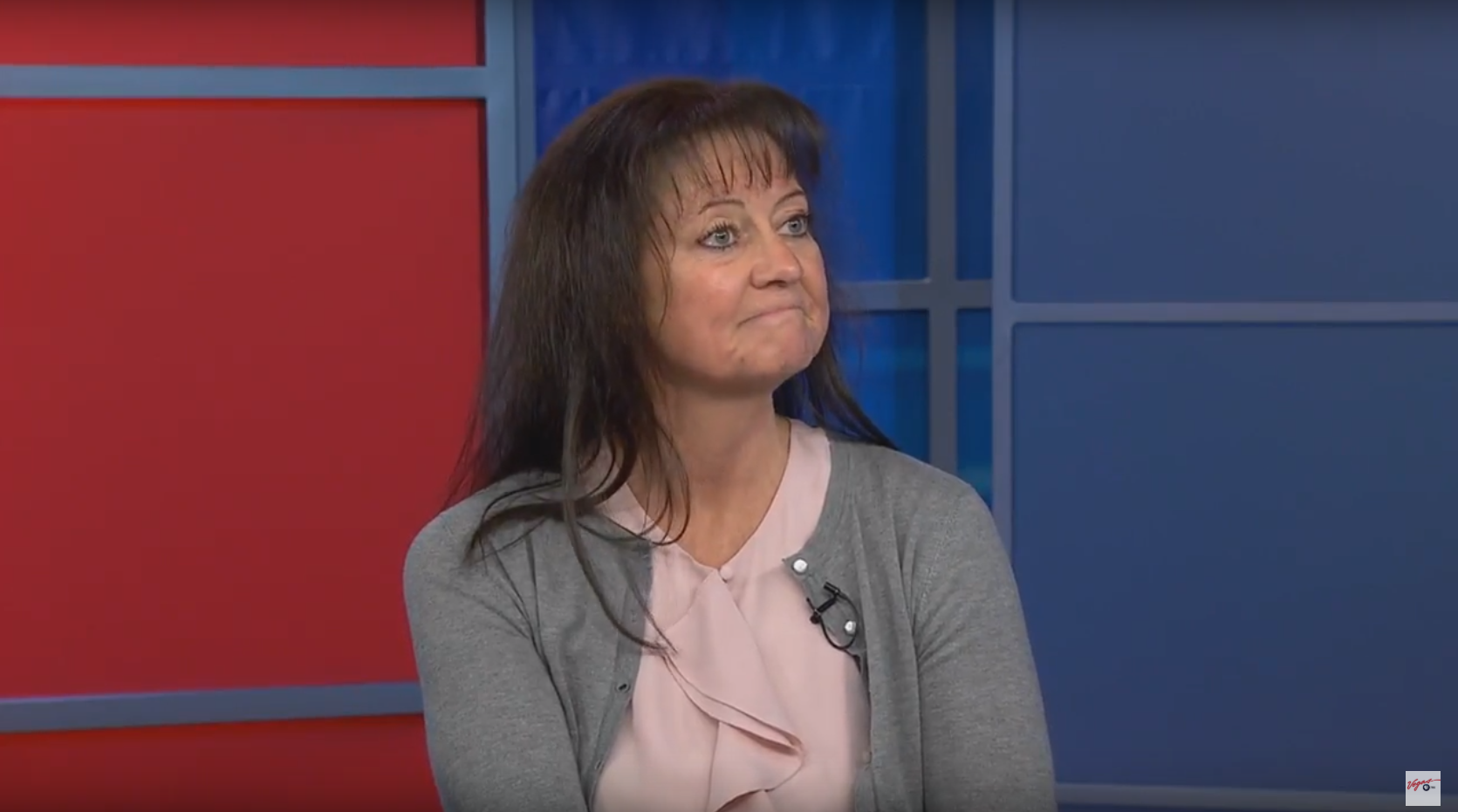
She thought it was a perfect fit alongside the state’s new reporting system, known as SafeVoice Nevada.
Nevada’s SafeVoice Anonymous Reporting System
To improve school safety, SafeVoice was created by the late State Sen. Debbie Smith and enacted in legislation sponsored by Sen. Heidi Gansert in 2017.
The SafeVoice program allows students, parents and school faculty throughout Nevada to report anything that threatens the safety and wellbeing of students.
The Nevada Department of Education (NDE) Office for a Safe and Respectful Learning Environment partnered with the Nevada Department of Public Safety (DPS) to launch SafeVoice.
Anonymous reports can be made via a website, hotline, or mobile app.
“SafeVoice includes and goes beyond bullying to create a confidential way to also report threats of school violence and friends at risk of suicide, self-harm, drugs and more,” said Christy McGill of the NDE.
The SafeVoice system uses a cloud-based tip and intelligence management software to manage and monitor incoming tips.
Through the SafeVoice Communications Center, a fully trained professional team of experts is ready to respond in an appropriate manner 24/7/365. Nevada DPS’ Investigation Division manages the SafeVoice Communications Center.
The Communications Center determines the engagement level of law enforcement and passes the information to the school team.
Each school is required to have a team with a school administrator, counselor and or a social worker.
The school team then decides how to best respond.
As of August 2018, every school in Nevada was connected to the SafeVoice tipline.
The theory behind the anonymous tip system is that safe schools and student care lead to student empowerment and a positive school climate, which is critical to student success.
More than 1,700 bullying tips were reported to SafeVoice within the 2018-2019 school year, according to Karina Gonzalez with KUNR. The top reports in Nevada schools in the 2018-2019 school year were bullying, suicide threats and threats to schools, including planned attacks, according to the state’s Office of Safe and Respectful Learning.
“With the new SafeVoice reporting system, it means that somebody is there at any time, day or night, to take reports and respond appropriately,” said Malich, according to an NDE press release. “The SafeVoice system offers students and parents a number of ways to make reports and this will help to make our schools safer places.
Because the SafeVoice program is 24-hour, funding was built in to bridge weekends, holiday breaks, and the summer.
“We have seen suicides stopped in progress,” Malich said. “We can’t always wait until Monday.”
Could the Handle With Care program augment the SafeVoice reporting system?
Adding Handle With Care to SafeVoice
Malich thought the SafeVoice Communications Center, operated by the Nevada Department of Public Safety, could receive and field “Handle With Care” notifications to then deliver to the SafeVoice school multidisciplinary teams.
“We already have the structure in place,” Malich said.
Malich proposed the idea to Clark County Board of School Trustees:
- She presented information on the Handle With Care program.
- She recommended using a bill draft request to establish “Handle With Care” across the state. School districts in Nevada are allowed two bill draft requests per legislative session.
- Malich worked with the district’s government and community relations team on a bill draft request for a statewide “Handle With Care” program.
The board agreed to advance “Handle With Care” as a bill draft request in August 2019.
Presenting Handle With Care to the Senate Committee on Education
Malich was involved in drafting Senate Bill 80 and introducing it to the legislature in November 2018.
According to the bill, when law enforcement encounters a student at the scene of a traumatic event, they will notify the Nevada DPS and the appropriate school district through SafeVoice, so the school can check in on the student or be aware that the student is dealing with trauma.
Because it would be through the existing SafeVoice system, no funding would be necessary.
She presented to the Senate Committee on Education in February 2019.
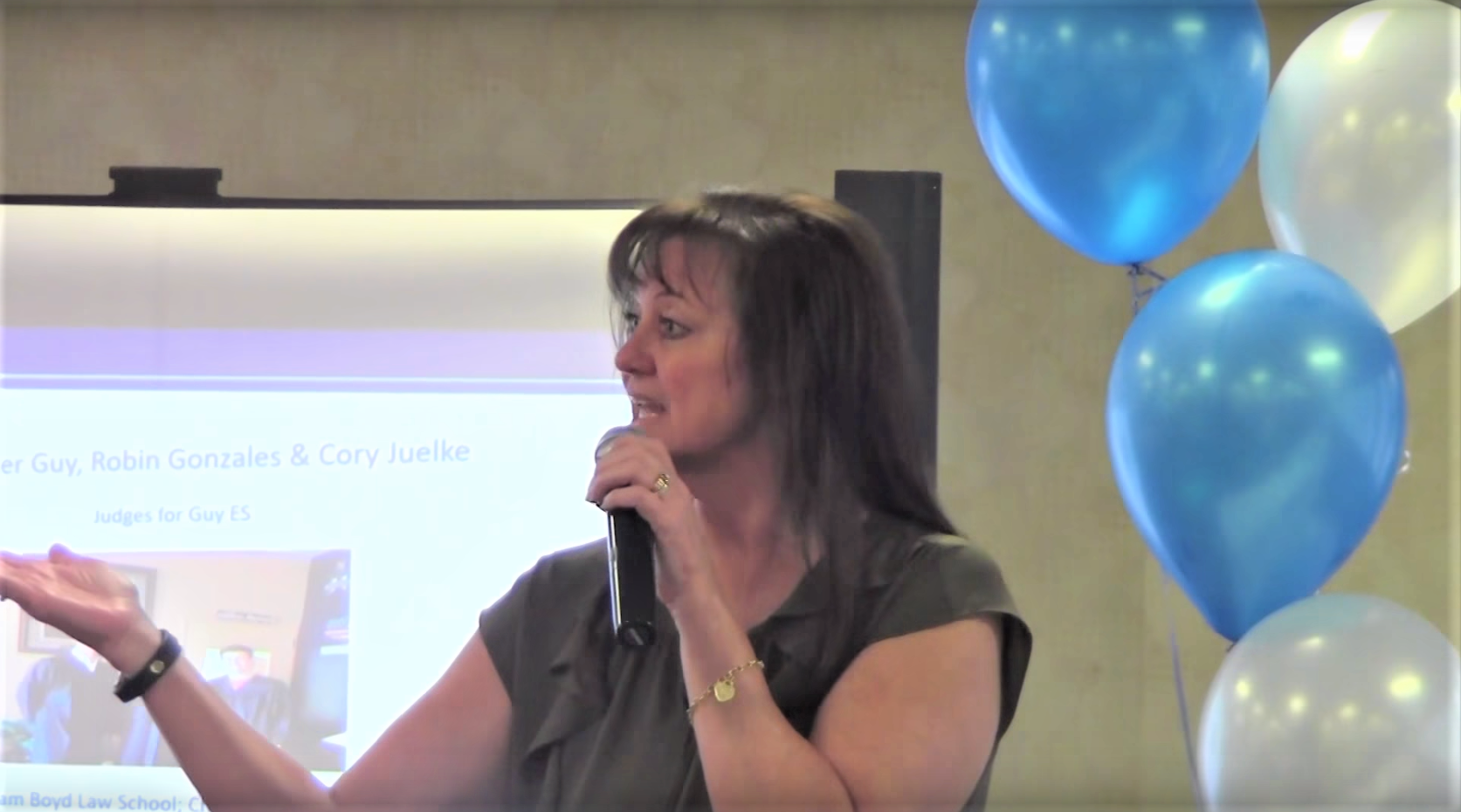
Malich worked with agencies that had concerns and made sure stakeholders understood what the program was asking and wasn’t asking.
“The school multidisciplinary teams are trained professionals and each team has a member or members that are trained at dealing with trauma, and we would ensure through our training that the people handling the child are experienced at dealing with children with trauma so that they take precautions to not re-traumatize the child,” Malich said during her presentation to the Senate Committee on Education.
The Senate Committee on Education passed the bill in April 2019 and the Assembly Committee on Education passed the bill in June 2019.
On June 12, Gov. Steve Sisolak approved SB 80 to be implemented on Jan. 1, 2020.
Launching Nevada’s Statewide Handle With Care Program
Malich is working with a stakeholder team to create a trauma-informed training for all district employees.
She also is working with the developers of the SafeVoice system to include Handle With Care notifications from first responders.
“We did research and then created a training from existing models,” Malich said. “We took best practices, wrote a script, and are in process of filming in studio.”
She wants to give educators the tools and resources to shift further away from zero-tolerance discipline to trauma-informed and restorative justice.
Malich recognized that staff often thought they were doing the right thing, but many times it wasn’t well received by a child. So, part of the 22-minute training videos will include the student voice.
Malich will also provide more intensive training for those who want to get more involved.
She wants Handle With Care tips to reach the schools the same way as SafeVoice tips.
“We don’t want a school team to assume that tips through another system are more or less important,” Malich said.
Malich is ready for the official launch of Nevada’s Handle With Care program in January 2020.
She will continue to be part of every school team, receiving every SafeVoice tip and every Handle With Care notification.
“Our students are growing up with trauma that manifests at school,” Malich said. “We have to take care of them while they are here and get them in a better place emotionally before we can educate them.”
You have the power to start Handle With Care in your area!
Download the free Salud America! “Handle With Care Action Pack” to start a Handle With Care program. In the program, police notify schools when they encounter children at a traumatic scene, so schools can provide support right away.
The Action Pack contains materials and technical assistance to start a conversation and plans for implementing a Handle With Care program. Over 65 U.S. cities have started such a program.
The Action Pack was created by Dr. Amelie G. Ramirez, director of the Salud America! Latino health equity program at UT Health San Antonio, with help from Andrea Darr, director of the West Virginia Center for Children’s Justice, which started the first Handle With Care program in 2013.
Explore More:
Trauma & ACESBy The Numbers
142
Percent
Expected rise in Latino cancer cases in coming years
This success story was produced by Salud America! with support from the Robert Wood Johnson Foundation.
The stories are intended for educational and informative purposes. References to specific policymakers, individuals, schools, policies, or companies have been included solely to advance these purposes and do not constitute an endorsement, sponsorship, or recommendation. Stories are based on and told by real community members and are the opinions and views of the individuals whose stories are told. Organization and activities described were not supported by Salud America! or the Robert Wood Johnson Foundation and do not necessarily represent the views of Salud America! or the Robert Wood Johnson Foundation.



